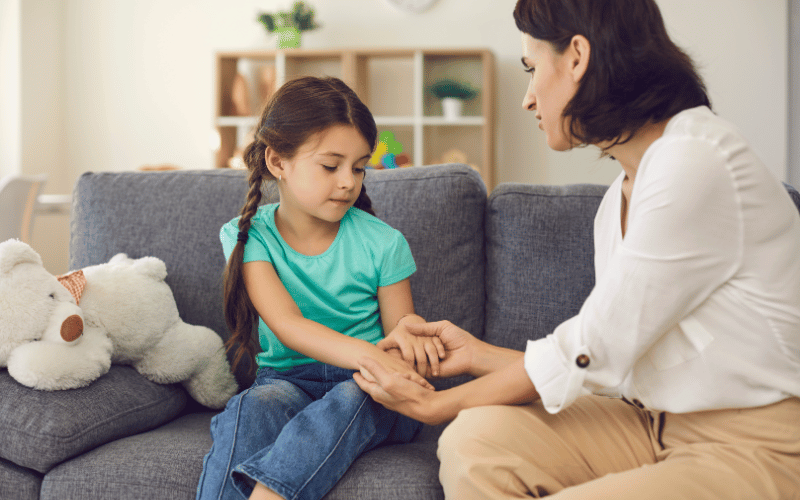Introduction: The Power of Open Communication in Children’s Emotional Development
Are your little ones a closed book when it comes to sharing their feelings? It’s time to turn the page. “Let’s Talk: Encouraging Open Communication about Feelings and Emotions in Kids” is a critical subject, essential to their emotional intelligence and overall development.

Why It Matters: Empowering Children through Emotional Dialogue
Firstly, fostering open communication about feelings and emotions is crucial for children’s mental health. It can help prevent anxiety, depression, and other mental health issues later in life. By talking openly, kids learn to articulate their feelings, making it easier to understand and manage them.
The Art of Listening: Key to Fostering Open Communication
Listening is a skill that we, as adults, sometimes overlook. But in the realm of encouraging open communication about feelings and emotions, it’s as essential as talking. A child who feels heard is a child who feels understood and valued. This sense of value reinforces their confidence in expressing emotions more openly.
Building Emotional Vocabulary: Giving Kids the Words They Need
To discuss emotions, children need the right vocabulary. It’s not enough to know happy, sad, or angry. Expanding their emotional lexicon can help them identify and express complex feelings accurately. This can include words like frustrated, disappointed, or overwhelmed.
Emotion Coaching: Navigating the Emotional Landscape
Once your child has the vocabulary, they need the tools to navigate their emotional landscape. This is where emotion coaching comes into play. It involves acknowledging their feelings, guiding them to understand what they’re experiencing, and helping them develop appropriate responses.
Creating a Safe Space: Ensuring Emotional Security
Creating a safe space for your child to express their feelings is vital. It’s a zone free from judgment, criticism, or punishment, where they can openly discuss their emotions. An emotionally secure child will naturally communicate their feelings more effectively.
Role of Play in Emotional Expression
Play is a child’s primary language. Incorporating emotional dialogue into their playtime can be a powerful strategy. Role-playing games, for instance, can help children experience different emotional scenarios in a safe, controlled environment.
Empathy: Walking a Mile in Your Child’s Shoes
Empathy is not just about understanding your child’s emotions. It’s about showing them you understand. Demonstrating empathy encourages your child to share more about their feelings, fostering a deeper emotional connection.
Open-Ended Questions: The Gateway to Emotional Discourse
Asking open-ended questions can help your child explore their feelings more deeply. These questions encourage them to think, reflect, and express their emotions better than simple yes/no inquiries.
Patience and Persistence: The Long Road to Emotional Openness
Remember, encouraging open communication about feelings and emotions in kids is a marathon, not a sprint. Patience and persistence are key. With time and consistent effort, your child will become more open about their emotions.
Nurturing Emotional Resilience: Preparing Kids for Life’s Ups and Downs
Through open emotional communication, we can nurture resilience in our children. They learn to understand that it’s okay to feel upset or disappointed and that these feelings are temporary. This understanding can help them bounce back from life’s challenges more quickly.
Conclusion: Embracing the Journey of Emotional Openness
Ultimately, “Let’s Talk: Encouraging Open Communication about Feelings and Emotions in Kids” is a journey, not a destination. It’s about creating an environment where your child feels safe and valued enough to share their innermost feelings. By fostering this open communication, we equip our children with the emotional intelligence they need to navigate life’s ups and downs. It might seem challenging at times, but remember, every small step counts. It’s about the journey, not the finish line. So let’s open the dialogue, understand our children better, and build stronger, healthier emotional bonds with them.